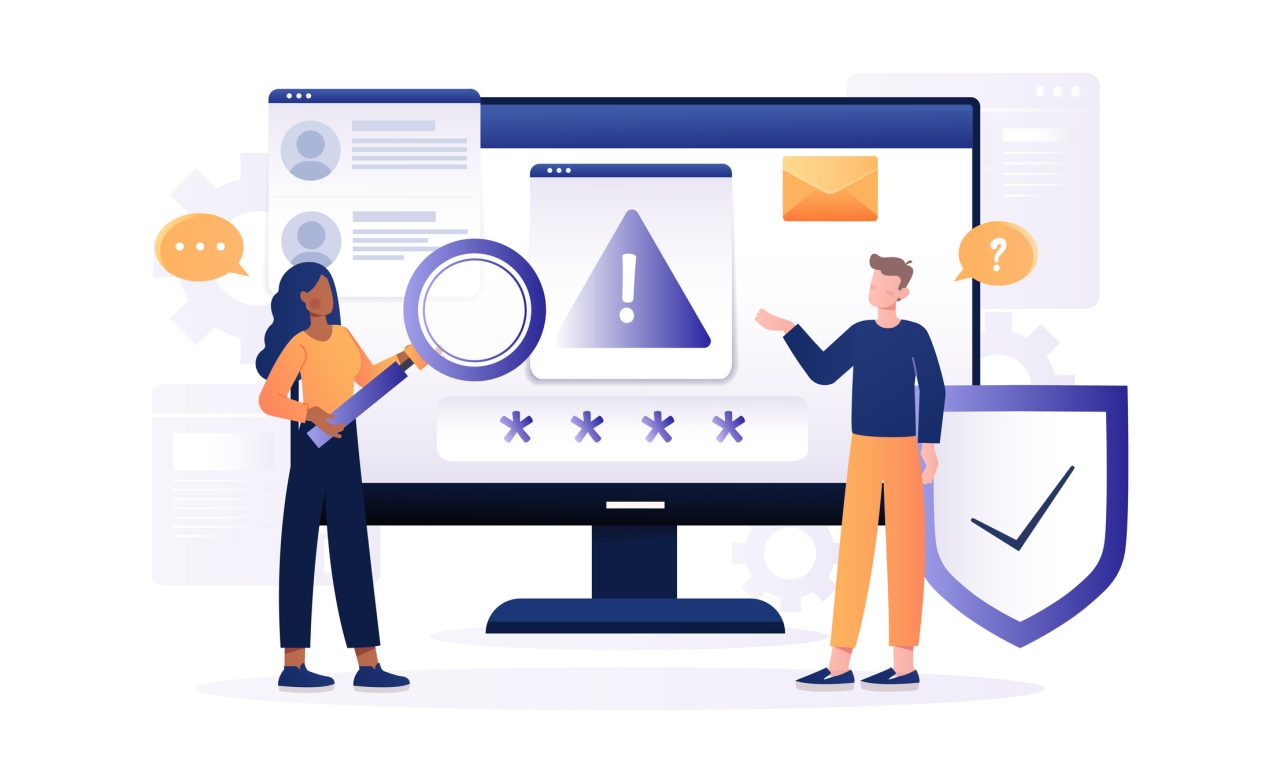In today’s digital landscape, content is king, but not just any content – the right content. Many businesses churn out endless blogs, videos, and social media posts without a strategic plan, leading to wasted resources and missed opportunities. This is where content gap analysis comes into play. Content gap analysis is a strategic approach that helps identify the missing pieces in your content strategy, ensuring that you meet your audience’s needs and stay ahead of the competition.
In this article, we’ll explore the essentials of content gap analysis, its benefits, and a step-by-step guide to conducting an effective analysis to boost your content’s performance.
Table of Contents
What is Content Gap Analysis?
Content gap analysis is a methodical process used to identify gaps in your content strategy. It involves analyzing the existing content landscape, both within your own portfolio and that of your competitors, to pinpoint areas where crucial information or valuable keywords are missing. This analysis helps businesses create a more comprehensive content plan that better addresses the needs and interests of their target audience.
At its core, content gap analysis is about identifying the discrepancies between the content you have and the content your audience is seeking. It examines the performance of your current content, assesses what topics or keywords your competitors are covering that you are not, and looks for trends in your industry that you may be missing out on. This allows you to develop content that fills these gaps, enhancing your site’s relevance and value to your audience.
The three types of content gaps include:
- Keyword Gaps: These occur when there are relevant keywords that your competitors rank for but you do not. Identifying these gaps can help you optimize your content for search engines.
- Topical Gaps: These gaps are evident when important topics of interest to your audience are missing from your content portfolio. Filling these gaps ensures that you cover all relevant subject areas comprehensively.
- Audience Gaps: These arise when certain segments of your target audience are not adequately addressed by your content. Understanding and catering to these segments can help you engage a broader audience and meet diverse needs.
Understanding these components and their implications is the first step in leveraging CGA to boost your content strategy.

Importance of Content Gap Analysis
The significance of content gap analysis cannot be overstated. By identifying and incorporating missing keywords and topics, your content can achieve better search engine rankings, driving more organic traffic to your site.
Providing comprehensive and relevant content keeps users on your site longer, reduces bounce rates, and encourages deeper interaction with your brand. Addressing all stages of the customer journey ensures that you can guide potential customers from awareness to decision-making more effectively.
Preparing for a Content Gap Analysis
Before diving into the intricate process of content gap analysis, thorough preparation is essential to ensure that the analysis is aligned with your business goals and yields actionable insights. This preparation phase involves setting clear objectives, gathering relevant data, and utilizing the right tools and resources.
Set Objectives
The first step in preparing for a content gap analysis is to define your objectives clearly. Establishing specific goals will guide your analysis and help measure its success. Common objectives include improving search engine optimization (SEO), enhancing the customer journey, and increasing engagement or conversion rates. For instance, if your goal is to improve SEO, your focus might be on identifying high-value keywords that you are currently missing.
Alternatively, if your aim is to enhance the customer journey, you might look for content gaps in the stages of the buyer’s funnel that are less covered. By having clear, well-defined objectives, you can tailor your content gap analysis to meet the precise needs of your business.
Gather Data
Once your objectives are set, the next step is to gather comprehensive data, both from internal and external sources.
Analyzing your internal data involves conducting a thorough audit of your existing content. This means evaluating your current content library to understand what topics you have covered, how well they perform, and where there might be deficiencies.
Look for patterns in engagement metrics, such as page views, time on page, and bounce rates, to determine which pieces of content are resonating with your audience and which are not. This internal analysis provides a baseline understanding of your content’s strengths and weaknesses.
External data collection focuses on understanding the content landscape outside your organization. This involves researching competitor content and industry trends to identify what topics and keywords your competitors are targeting that you might be missing.
Competitor analysis is particularly valuable as it provides insights into the strategies that are working well within your industry. Staying updated with industry trends ensures that your content remains relevant and timely. This external perspective helps you spot opportunities to differentiate your content and better meet your audience’s needs.
Tools and Resources
To efficiently gather and analyze both internal and external data, leveraging the right tools is crucial. Tools like Ahrefs and SEMrush are invaluable for keyword research and competitor analysis. These tools allow you to see which keywords your competitors rank for, the content they are producing, and the backlinks they are acquiring.
Google Analytics is essential for internal content audits, offering detailed insights into how your existing content is performing. It helps you track metrics such as user engagement, conversion rates, and traffic sources. BuzzSumo is another powerful tool that helps identify popular topics and trends within your industry, providing ideas for content that could fill gaps in your current strategy.
Conducting the Analysis
Once you have thoroughly prepared for your content gap analysis by setting clear objectives and gathering the necessary data, the next step is to conduct the analysis itself. This involves a detailed examination of keyword gaps, topical gaps, and audience gaps to uncover areas where your content strategy can be improved and expanded.
Identify Keyword Gaps
Identifying keyword gaps is a critical component of content gap analysis. Start by conducting extensive keyword research using tools like Ahrefs, SEMrush, or Google Keyword Planner. These tools help you discover relevant keywords that your competitors rank for but you do not. Analyze the search volume, competition level, and relevancy of these keywords to your business.
Pay close attention to high-value keywords that align with your content strategy objectives. Review your own website’s keyword performance to spot keywords that are underperforming or not targeted at all. This process helps you pinpoint specific keywords that can enhance your SEO strategy, improve organic traffic, and increase visibility in search engine results.
Spot Topical Gaps
Topical gaps are areas where your content fails to cover important subjects that your audience is interested in. To identify these gaps, begin by conducting a comprehensive content audit of your existing materials. Use tools like Google Analytics to assess which topics are performing well and which are not. Look for patterns in content performance to understand which areas are lacking coverage.
Analyze competitor content to see what topics they are covering that you are not. This competitive analysis reveals opportunities to create content on subjects that are currently underserved by your website. Staying updated with industry trends and audience interests through tools like BuzzSumo can help you discover new and emerging topics. By addressing these topical gaps, you ensure that your content remains relevant, comprehensive, and valuable to your audience.
Recognize Audience Gaps
Recognizing audience gaps involves understanding segments of your target audience that are not adequately addressed by your current content. Start by analyzing demographic and behavioral data from your website analytics to identify who your audience is and how they interact with your content. Look for patterns and segments that show low engagement or high bounce rates in your content gap analysis.
Gather feedback directly from your audience through surveys, social media interactions, and customer feedback forms. This qualitative data provides insights into what your audience is looking for and where their needs are not being met.
Also, consider conducting persona analysis to ensure that your content addresses the different needs and preferences of various audience segments. By filling these audience gaps, you can create more personalized and targeted content that resonates with different segments of your audience, leading to higher engagement and satisfaction.
Synthesize the Findings
After identifying keyword, topical, and audience gaps, the next step is to synthesize these findings into a coherent strategy. Compare the gaps you’ve identified with your initial objectives to ensure alignment. Prioritize the gaps based on their potential impact and feasibility. Present the comprehensive results of your content gap analysis in an organized manner.
For example, if improving SEO is your primary goal, prioritize high-value keyword gaps. If enhancing the customer journey is your focus, prioritize topical and audience gaps that address different stages of the buyer’s funnel.
Once you have your content gap analysis findings, create a detailed plan that outlines how you will address these gaps, including specific content types, formats, and distribution channels. This plan should also include a timeline and resource allocation to ensure that the new content is created and deployed effectively.
By systematically conducting the content gap analysis and synthesizing your findings, you can develop a strategic content plan that fills the identified gaps. This approach ensures that your content not only meets your business objectives but also provides significant value to your audience. The next phase involves implementing this plan and continuously optimizing your content strategy based on performance data and evolving audience needs.
Addressing Content Gaps
After identifying the various content gaps through meticulous content gap analysis, the next crucial step is to address these gaps strategically. This involves developing a comprehensive content strategy, creating high-quality content to fill the identified gaps, optimizing this content for maximum impact, and effectively promoting it to ensure it reaches your target audience.

Develop a Content Strategy
Addressing content gaps begins with a well-defined content strategy that prioritizes the identified gaps based on their potential impact on your business objectives. For instance, if keyword gaps are your primary focus, your strategy should prioritize content that targets high-value, underutilized keywords.
On the other hand, if topical gaps are more pressing, your strategy should include a diverse range of topics that have been underserved in your content portfolio. This strategy should be aligned with your overall marketing goals, whether it’s enhancing SEO, improving user engagement, or driving conversions.
Outline specific goals, content types, and formats that will address the gaps effectively. This could include blog posts, videos, infographics, or other formats that resonate with your audience.
Creating High-Quality Content
Once your strategy is in place, the next step is to create content that fills the identified gaps. Start by developing detailed content briefs for each piece, outlining the target keywords, main points, and desired outcomes. Use the results from your content gap analysis to develop these briefs.
This ensures that your content is focused and relevant. When creating content, aim for high quality and depth. Provide comprehensive information that fully covers the topic and answers your audience’s questions. Use a variety of content formats to cater to different audience preferences. Figure out what you need to focus on through content gap analysis.
For example, if you identify a gap in visual content, consider creating infographics or videos. Ensure that your content is engaging and well-structured, with clear headings, subheadings, and visual elements that make it easy to read and understand. Incorporate storytelling and real-life examples to make the content more relatable and compelling.
Optimize Content
Optimization is a critical step in ensuring that your content performs well and reaches its intended audience. For SEO, this means integrating the targeted keywords naturally throughout the content, including in headings, subheadings, meta descriptions, and alt text for images. It is a necessary consequence of content gap analyis.
Also, focus on creating engaging and click-worthy titles and meta descriptions that improve click-through rates. Internal linking is another important aspect of optimization. Link to other relevant content on your site to improve the user experience and keep visitors on your site longer.
Ensure that your content is mobile-friendly and loads quickly, as these factors significantly impact user experience and search engine rankings. Regularly update and repurpose existing content to keep it fresh and relevant, incorporating new insights and developments as they arise.
Promote and Distribute Content
Creating great content is only half the battle; promoting it effectively is equally important. Develop a distribution plan that ensures your content reaches the right audience at the right time. Leverage various channels, such as social media, email newsletters, and industry forums, to promote your content. Tailor your promotional strategies to each platform to maximize engagement.
For example, use eye-catching images and short, compelling descriptions on social media, while providing more detailed summaries and calls-to-action in email newsletters. Collaborate with influencers and industry leaders to amplify your content’s reach. Guest posting on reputable sites and participating in webinars or podcasts can also help you reach a wider audience.
Consider using paid promotion strategies, such as SEM and social media ads, to boost visibility, especially for key aspects of content gap analysis.
Boost Your Content
Content gap analysis is a vital tool for any business looking to optimize its digital presence. By systematically identifying and addressing keyword, topical, and audience gaps, businesses can significantly enhance their SEO, user engagement, and conversion rates.
The process involves setting clear objectives, gathering comprehensive data, conducting a detailed analysis, and implementing a strategic content plan. Continuous monitoring and iteration are essential to ensure ongoing relevance and effectiveness.
Transform your digital presence today – check out EvolveDash, your expert SEO and content marketing agency!



















